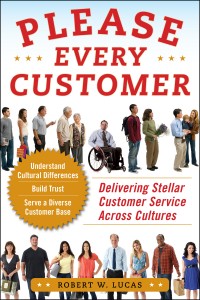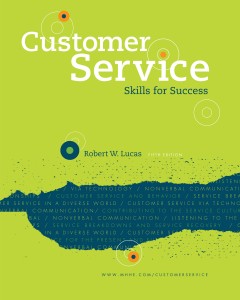The Role of Eye Contact in Customer Service in a Diverse World
It has been said that the eyes are “the windows to the soul.” Eye contact is very powerful. This is why criminal investigators are often taught to observe eye movement in order to help determine whether a suspect is being truthful or not.
In most Western cultures, the typical period of time that is comfortable for holding eye contact is 5 to 10 seconds, then an occasional glance away is normal. Looking away in many cultures can often send a message of disinterest, or dishonesty, or lack of confidence. If either the length or the frequency of eye contact differs from the “norm,” many people might think that you are being rude or offensive. They might also interpret your behavior as an attempt to exert power or as flirting.
Other potential nonverbal problems when dealing with customers can be caused by looking down before answering questions, glancing away continually as your customer talks, blinking excessively, and other such eye movements can create a negative impression.
In any case, your customer might become uncomfortable and may react in an undesirable manner (for example, becoming upset or ending the conversation) if you use eye contact in what they perceive as an inappropriate manner.
As with all other aspects of workplace interaction in a multicultural customer service environment, do not forget that cultural values and practices often influence the way in which people communicate and interpret message signals.
Just as you send messages with your eyes, your customer’s eye contact can also send meaningful messages to you. A customer’s lack of direct eye contact with you could send a variety of messages in a westernized culture. It might send messages such as a lack of interest, confidence, trust, or dishonesty, depending on how you interpret those cues. For example, if you are watching a customer shop and notice a quick loss of eye contact each time you try to engage the customer visually, the customer might be nervous because he or she is shoplifting, or the customer simply might not want your attention and assistance.
As with any other form of nonverbal communication, always look for clusters or multiple cues before interpreting the meaning and deciding on a course of action. This is because you are dealing with humans whose background, gender, personality, culture and various other factors can easily impact their intent. If you filter based on your own personal beliefs or background, you can potentially cause a service and/or relationship breakdown with your customer.

About Robert C. Lucas
Bob Lucas has been a trainer, presenter, customer service expert, and adult educator for over four decades. He has written hundreds of articles on training, writing, self-publishing, and workplace learning skills and issues. He is also an award-winning author who has written thirty-seven books on topics such as, writing, relationships, customer service, brain-based learning, and creative training strategies, interpersonal communication, diversity, and supervisory skills. Additionally, he has contributed articles, chapters, and activities to eighteen compilation books. Bob retired from the U.S. Marine Corps in 1991 after twenty-two years of active and reserve service.
Make Money Writing Books: Proven Profit Making Strategies for Authors by Robert W. Lucas at Amazon.com.
The key to successfully making money as an author and/or self-publisher is to brand yourself and your company and to make yourself and your book(s) a household name. Part of this is face-to-face interaction with people at trade shows, library events, book readings, book store signings, blogging or guest blogging on a topic related to their book(s). Another strategy involves writing articles and other materials that show up online and are found when people search for a given topic related to a topic about which the author has written.
If you need help building an author platform, branding yourself and your book(s) or generating recognition for what you do, Make Money Writing Books will help. Bob’s popular book addresses a multitude of ideas and strategies that you can use to help sell more books and create residual and passive income streams. The tips outlined in the book are focused to help authors but apply to virtually any professional trying to increase personal and product recognition and visibility.





